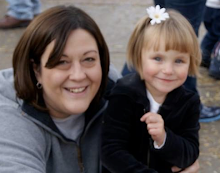
What You Should Know About Pacifiers
As I write this, my 2-1/2-year-old, Sophie, is in our family room, loudly demanding her "binkies." I've spent the last few weeks talking to experts -- pediatricians, pediatric dentists, child psychologists -- about when and how to put an end to her pacifier habit, and have heard everything from "ignore it and it will stop eventually," to "no pacifier past 24 months, period."
Perhaps no discretionary decision causes parents more angst than the question of whether to introduce a pacifier -- and later, when and how to take it away. There is no shortage of opinions on the subject. When our first baby, Jake (now 4), entered the world a colicky tyrant, my mother insisted there was but one solution: "Give him a pacifier." (We tried; he refused.)
My friend Carolyne Hynes, of Weston, Connecticut, mother of 3-year-old Olivia, is of precisely the opposite mindset: "Pacifiers exist to soothe the parents, not the child."
Meanwhile, what mother, having sheepishly allowed her over-2 toddler a pacifier at the grocery checkout (to avert the tantrum sure to erupt when said toddler is denied a Blow Pop or M&Ms), hasn't endured the disapproving glances of well-meaning strangers?
The good news for parents puzzling over pacifiers: Experts agree they're entirely appropriate for soothing baby. Still, pediatric dentists recommend limiting pacifier time once a child is 2 and eliminating it by age 4 to avoid dental problems. Beyond that, there are no hard-and-fast rules about when and how to say "bye-bye binky." Here's what you need to know to make the right choice for you and your child.
Pacifier SafetyWhen purchasing a pacifier, be sure to follow these guidelines from the American Academy of Pediatrics:
- Look for a one-piece model with a soft nipple (some two-piece pacifiers can break apart).
- The shield should be made of firm plastic with air holes, and should measure at least 1 inch across so baby can't swallow it.
- Purchase dishwasher-safe pacifiers and clean them this way frequently until baby is 6 months; after this, wash pacifiers regularly with hot soap and water.
- Pacifiers come in two sizes: 0-6 months and 6 months and above; for baby's comfort, make sure pacifiers are the correct size.
- To prevent the risk of strangulation, never tie a pacifier around your baby's hand, neck, or crib railing. Use a pacifier clip instead.
- Never use a bottle nipple and ring in place of a pacifier; the nipple can separate from the ring and pose a choking hazard.
- Inspect pacifiers regularly for damage and replace them if the rubber has changed color or torn.










No comments:
Post a Comment